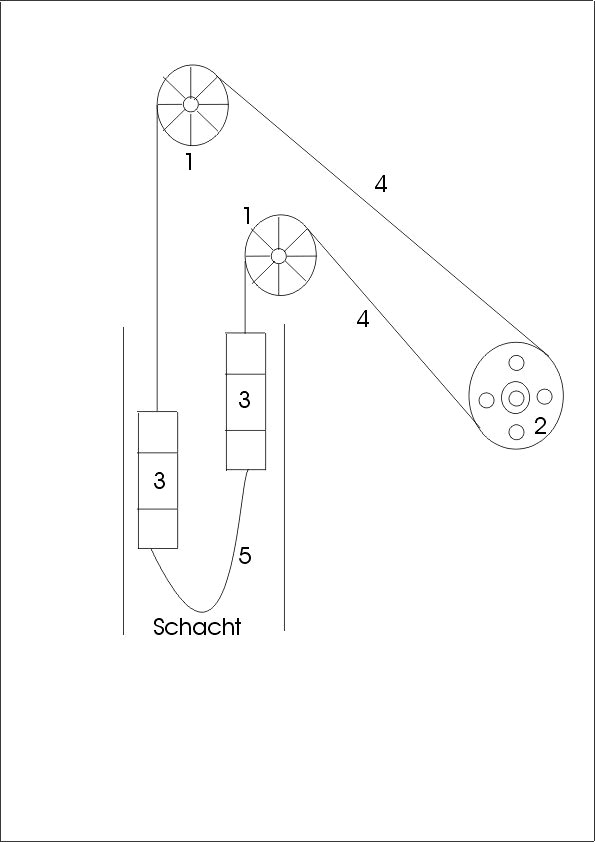|
|
|
How the Koepe hoisting principle works: |
|
The principle works in the following way: The rope coming out of the shaft is lead around the wheels at the winding tower's top and by this to the winding machine in the corresponding building. Then the rope is driven by the driving wheel and after this it is sent back vertically into the shaft after passing another wheel at the winding tower. So there are two pit cages fixed at each rope - one moving upwards and the other moving downwards the shaft at the same time. After that one of the pit cages arrived at the onset of a certain level and the other one arrived at the pit bank, there is a strong difference concerning the sharing of the loads: At the first side of the driving wheel just a few metres of rope and the pit cage are pulling and at the other side there are up to 1.500 metres of rope and the pit cage, so that another rope is used for levelling out these differences: It is fixed under the pit cages and connects their floors. In this way the load of both sides is leveled out, so that the machine just has to bring up the power to move what has been put into the pit cages, for example the miners, the mine cars or the coal. The rope connecting the bottom ends of the two pit cages is in most cases a flat one. If you imagine the rope at the top, the both pit cages and the rope connecting them at the bottom, you can nearly see a circle. That is why this kind of hoisting is called "Endlosseilfoerderung" in German, the (nearly) correct translation of this expression is "endless rope hoisting". At the top of this page there is a picture of the Koepe principle, the corresponding explanations can be found here: 1.) The wheels on top of the winding tower. 2.) The machine's driving wheel. 3.) The pit cages in the shaft, the ones in the picture have three levels. 4.) The ropes carrying the load. 5.) The rope fixed under the pit cages for leveling out the different loads. Explanation: "Schacht" is the German word for shaft. |
